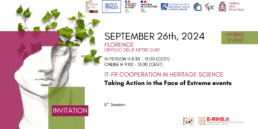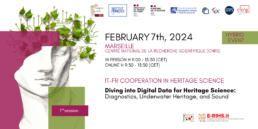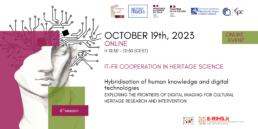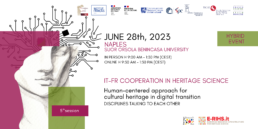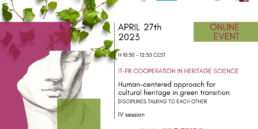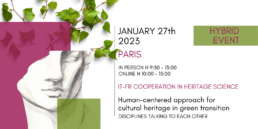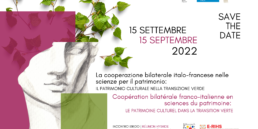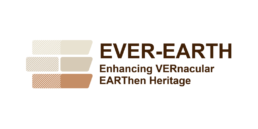IT-FR cooperation in Heritage Science
Human-centered approach for cultural heritage in green transition
Disciplines talking to each other
November 10th 2022 | H 10:30-12:30
Online Event | Zoom platform
Within the framework of the Italian-French bilateral cooperation in Heritage Science, participate to the first online workshop of a series of sessions on the Cultural Heritage in the Green transition issue!
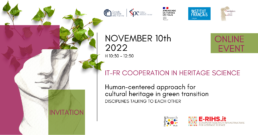
In the wake of the impulses given by the Quirinal Treaty, which emphasizes the field of cultural heritage as a field of cooperation between Italy and France, the Istituto di Scienze del Patrimonio Culturale del Consiglio Nazionale delle Ricerche, the Fondation des Sciences du Patrimoines, the Institut Français Italia, and the French Embassy in Italy are pleased to invite you to a workshop around the place of cultural heritage in the green transition.
The workshop will be a sequel to a debate. It is part of the Franco-Italian bilateral cooperation on heritage science which is based on the recognized excellence of the two countries on several long-term joint research initiatives. Italy will host the statutory headquarters of the European Infrastructure for Heritage Science (E-RIHS) which is in the process of forming a consortium, for a European research infrastructure ERIC, by 2023. France leads the Joint Programming Initiative on Cultural Heritage and Global Change (JPI CH) and the project that will lead to the creation of an Alliance for Research on Cultural Heritage in Europe (ARCHE).
The workshop aims to bring together even more Italian and French researchers working in the field of heritage sciences on the urgent topic of climate change, the impact it has on cultural heritage and the way in which cultural heritage can be a driver of resilience, a capital of knowledge and a source of creativity and innovation for the ecological transition.
The bilateral meeting will be the first in a series and will start the discussion from the White Paper. Cultural Heritage and Climate Change: New challenges and perspectives for research which presents a certain number of priorities, research perspectives and also proposes a list of instruments to be put in place to support the development of this scientific field and support the activities of organizations engaged in climate action.
The online event will be held in English
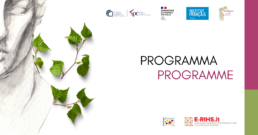
Presentations by speakers at the event are available here
Coastlines and Climate change
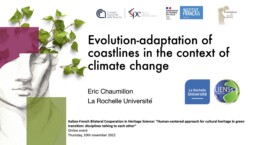
Evolution-adaptation of coastlines in the context of climate change
Sedimentary coasts are very dynamic even without climate change or sea level changes. Their shoreline can move at rates of meters per years. If the sedimentary budget of a given coast is negative, erosion predominates and the shoreline is retreating. Conversely, if the sedimentary budget is positive, sediment accumulation predominates and the shoreline is migrating seaward. Today a major consequence of global warming is sea level rise. Global mean sea level rise accelerates since the 19th century and reaches 3,6 mm/yr for the last decades. This trend will continue for the next centuries. The effect of sea level rise on many sedimentary coasts is a shoreward migration of the shoreline. Sediment accumulation along the coastline is the main parameter that can counteract this shoreline migration induced by sea level rise. Unfortunately, sedimentation along many coasts is reduced due to human activities, like river damming or land reclamation, leading to an increase of coastal vulnerability to flooding. In addition to global sea level rise, fast sea level rise due to storm surges can occur locally and lead to major marine flooding. The frequency of these extreme sea levels related to storms will be increased by global sea level rise. Facing these already observed and projected evolutions, many adaption strategies are proposed. Hard defences, consisting of sea walls, rock armour, groynes, etc are able to prevent shoreline migration but at the same time are expensive and usually lead to beach erosion and major perturbations of coastal ecosystems. An example of soft defence is given by beach nourishment. Massive sand supply can result in an effective coastal protection, but also strongly impact coastal ecosystems. Both hard and soft defences are costly, energy-consuming and need maintenance. Ecosystem-based solution are increasingly popular in the research community and their application on sedimentary coasts has several advantages. An example is given by protection and restauration of coastal marshes and wetlands and/or “depolderisation”. The main advantages are: (1) fast sedimentation and building up elevation to keep pace with sea-level rise; (2) limitation of extreme sea levels during storms by flooding of lowlands, (3) wave energy dissipation by vegetation; (4) increase in biodiversity and biomass; (5) increase in water quality and (6) protection of coastal natural heritage leading to improve human health and well-being, social cohesion and connection of people to nature.
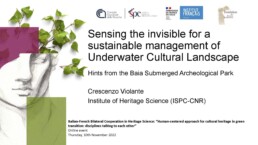
Sensing the invisible for a sustainable management of underwater cultural landscape: hints from the Baia submerged archeological park
AIMS
Sensing technologies applied to different operational purposes:
- Systematic non-invasive in situ monitoring of UCH
- Monitoring is the most effective method for studying changes to a submerged site over the course of its lifetime and for potentially identifying the factors that influence a site’s degradation so that preventative measures can be implemented.
- In line with the main principle of the UNESCO 2001 Convention aiming to develop new ways of in situ protection
- Simultaneous investigation of seafloor geomorphologic features and its cultural resources
- Improve the integration of archaeology and cultural heritage management within the marine science in line with the aims of
- The Ocean Decade Heritage Network
- The integration of UHC into Marine Spatial Planning (MPA)
- Fruition of UCH
- Sensing technologies provide a continuous overview of the seabed morphology and associated cultural features both to diving and not diving public.
- Underwater cultural landscapes are not human living environments and we do not see them directly and continuously.
METHOD
Very High Resolution and Ultra High Resolution echosounder systems including
- Multibeam echosounder system
- Depth measurements for morphological and archaeological characterization and mapping
- Side Scan Sonar system
- Seafloor acoustic reflectivity measurements for target detection and seabed composition
CASE STUDY
A pilot action is being implemented through the application of remote sensing techniques in the submerged Archaeological Park of Baia (the Roman Baiae; Naples, Italy). This area represents a unique example that combine cultural and natural heritage in marine environment. The importance of such interrelation has been formally recognized with the establishment of the Marine Protected Area (MPA) in 2002, based on the presence of marine habitats of community importance.
The Archaeological Park of Baia is part of an active volcanic complex, the Campi Flegrei caldera, which is characterized by frequent earthquakes and short-term vertical ground movements in the range of several metres to several tens of metres, known as bradyseism. Consequently, a number of architectural remains including villae maritimae and landing ports are now are presently drowned up to ca. -10 m below the actual mean sea level.
Sustainable conservation
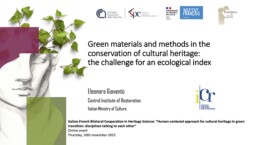
Green materials and methods in the conservation of cultural heritage: the challenge for an ecological index
The theme of sustainability in the conservation and restoration of cultural heritage is mainly addressed to the research and testing of new organic products deriving from natural sources such as : essential oils, nanocelluloses, polysaccharides extracted from algae , bacteria for cleaning and consolidation of artworks. On the contrary equally important factors, such as the global procedures and methodologies used in restoration sites, are often not taken into consideration although they influence the sustainability of the interventions in a perhaps even greater way. This is probably due to the complex multiplicity of aspects to be evaluated. For this reason, it would be advisable to adopt green planning guidelines that favor the reduction of environmental impact. The practice of guided and sustainable planning, by quantifying the ecological impact of each operations, could in fact promote the development of an ecological project index, which can guide administrations in the choice of more sustainable interventions.
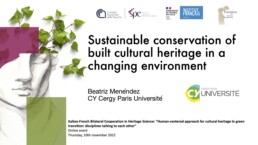
Sustainable conservation of built cultural heritage in a changing environment
Large research and innovation efforts have been made in Europe and worldwide for the conservation of Built Cultural Heritage (BCH) but more work is needed to take into account the ecological footprint of the materials and methods employed during conservation works. In this way, matching cultural heritage requirements with ecological, economic and social aspects becomes a crucial point in future conservation and restoration policies. One aspect of sustainability is the durability of proposed solutions and materials. In order to improve the durability of the conservation interventions it is important to know the environmental conditions of the building in the future, specifically climate and atmospheric composition.
To treat these aspects an international and multidisciplinary group of researchers, companies, stakeholders and associations, from Latin America and Europe was founded to work on the sustainable conservation of built cultural heritage in actual and future conditions. The proposed operational methods will consider the bidirectional relationships between conservation and environmental change. Conservation methods must contribute to minimize the environmental change by reducing the footprint of the building all over its lifetime and at the same time, they must adapt to actual and future environments, that changes must faster than during the previous life of buildings.
